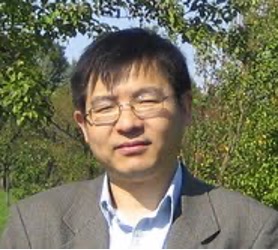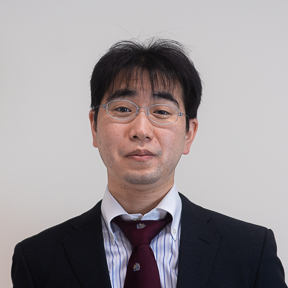
Full professor at the Information Technology and Electrical Engineering Department, ETH Zurich, Switzerland.
Abstract:
Graphs serve as a fundamental representation for large and intricate data sets. Their significance transcends various domains; in the natural sciences, graphs serve as a means to depict complex structures such as molecules, proteins, and genomes. In mathematics, they find utility in representing algebraic groups and knots. Additionally, graphs are indispensable tools for modeling social networks, traffic patterns, and they exhibit a plethora of applications within the realm of computer science.
The essence of this presentation centers around the intersection of machine learning and graph data. While deep learning has thrived in the context of structured data like tables, the realm of graphs poses a unique set of challenges. Unlike tables, graphs are characterized by their inherent variability, demanding the ability to extrapolate beyond fixed input dimensions.
During this discussion, we will delve into several pivotal breakthroughs in the field, shedding light on instances where machine learning has successfully navigated the complexities of graph data. However, we will also explore the persistent challenges and open problems that persist, as learning with graphs continues to evolve, offering a holistic perspective on the current state and future prospects of this burgeoning field.
Biography:
Roger Wattenhofer is a full professor at the Information Technology and Electrical Engineering Department, ETH Zurich, Switzerland. He received his doctorate in Computer Science from ETH Zurich. He also worked multiple years at Microsoft Research in Redmond, Washington, at Brown University in Providence, Rhode Island, and at Macquarie University in Sydney, Australia. Roger Wattenhofer’s research interests include a variety of algorithmic and systems aspects in computer science and information technology, e.g., distributed systems, positioning systems, wireless networks, mobile systems, social networks, financial networks, deep neural networks. He publishes in different communities: distributed computing (e.g., PODC, SPAA, DISC), networking and systems (e.g., SIGCOMM, SenSys, IPSN, OSDI, MobiCom), algorithmic theory (e.g., STOC, FOCS, SODA, ICALP), and more recently also machine learning (e.g., ICML, NeurIPS, ICLR, ACL, AAAI). His work received multiple awards, e.g. the Prize for Innovation in Distributed Computing for his work in Distributed Approximation. He published the book “Blockchain Science: Distributed Ledger Technology“, which has been translated to Chinese, Korean and Vietnamese.

Charles Black Evans Professor in Department of Electrical and Computer Engineering University of Delaware, Newark, DE 19716, USA
Abstract:
In this talk, we first introduce arithmetics (+, ―, ×, ÷) for real vectors of any fixed dimension, which are similar to those for real numbers. It can be thought of as a generalization of complex numbers that are just two dimensional real vectors. This is based on rational vector approximations and arithmetics for rational vectors, and can be done via algebraic number fields. Then, we introduce complex conjugate for a real vector and inner product for two real vectors and two real vector-valued signals of finite length. We also define convolution of two real vector-valued signals of finite length. With these concepts, the conventional linear filtering, least squares fitting, and ARMA model for scalar-valued signals with scalar-valued coefficients can be easily generalized to real vector-valued signals with real vector-valued coefficients, which broadens the existing linear signal processing methods for scalar-valued signals and might open a door to the future signal processing.
Biography:
Xiang-Gen Xia is the Charles Black Evans Professor, Department of Electrical and Computer Engineering, University of Delaware, Newark, Delaware, USA. Dr. Xia was the Kumar’s Chair Professor Group Professor (guest) in Wireless Communications, Tsinghua University, during 2009-2011, the Chang Jiang Chair Professor (visiting), Xidian University, during 2010-2012, and the World Class University (WCU) Chair Professor (visiting), Chonbuk National University, during 2009-2013. He received the National Science Foundation (NSF) Faculty Early Career Development (CAREER) Program Award in 1997, the Office of Naval Research (ONR) Young Investigator Award in 1998, the Outstanding Overseas Young Investigator Award from the National Nature Science Foundation of China in 2001, and the Information Theory Outstanding Overseas Chinese Scientist Award from the Chinese Information Theory Society of Chinese Institute of Electronics in 2019. Dr. Xia was the General Co-Chair of ICASSP 2005 in Philadelphia. He is a Fellow of IEEE. His current research interests include space-time coding, MIMO and OFDM systems, digital signal processing, and SAR and ISAR imaging. He is the author of the book Modulated Coding for Intersymbol Interference Channels (New York, Marcel Dekker, 2000) and a co-author of the book Array Beamforming Enabled Wireless Communications (New York, CRC Press, 2023).

Chair Professor of computer science and engineering at Huazhong University of Science and Technology (HUST), China.
Abstract:
With the rapid growth of big data, it is harder and harder to processing these ever-growing data with traditional computer architecture. Dataflow-based architecture provides a new way to tackle above challenge. This talk first briefly introduce the challenges in processing big data and also the difficulties in processing graph computing, then introduce some research results we have done during these years in using dataflow for graph computing. Finally, some future directions for dataflow architecture and also when used in graph computing are introduced.
Biography:
Hai Jin is a Chair Professor of computer science and engineering at Huazhong University of Science and Technology (HUST) in China. Jin received his PhD in computer engineering from HUST in 1994. In 1996, he was awarded a German Academic Exchange Service fellowship to visit the Technical University of Chemnitz in Germany. Jin worked at The University of Hong Kong between 1998 and 2000, and as a visiting scholar at the University of Southern California between 1999 and 2000. He was awarded Excellent Youth Award from the National Science Foundation of China in 2001.
Jin is a Fellow of IEEE, Fellow of CCF, and a life member of the ACM. He has co-authored more than 20 books and published over 900 research papers. His research interests include computer architecture, parallel and distributed computing, big data processing, data storage, and system security.

Chair Professor of Computer Science at the Institute of Computer Science, University of Göttingen, Germany
Abstract:
With the tremendous growth of Internet videos and their analytics techniques, various challenges emerge particularly those concerning mobility and analytics efficiency. How to mitigate these challenges and how can we embrace the opportunities in this era? In this talk, I will introduce some of our recent efforts and outline a vision towards integrating sensing, networking and data analytics in a supporting infrastructure in the digital world.
Biography:
Prof. Xiaoming Fu received his Ph.D. in computer science from Tsinghua University, Beijing, China in 2000. He was then a research staff at the Technical University Berlin until joining the University of Göttingen, Germany in 2002 as assistant professor, where he has been a full professor of computer science and heading the Computer Networks Group since 2007. He has spent research visits at universities of Cambridge, Columbia, UCLA, Tsinghua, Nanjing, Fudan, Uppsala, UPMC, and Sydney universities.
Prof. Fu's research interests include network architectures, protocols, and applications. He is an IEEE Fellow, an ACM Distinguished Member, and a member of Academia Europaea, and is currently an editorial board member of IEEE Network and IEEE Transactions on Network and Service Management, and co-editor-in-chief of the Journal of Social Computing. He has served on committee conferences of leading conferences such as SIGCOMM, CoNEXT, MOBICOM, MOBIHOC, INFOCOM, ICNP, ICDCS, IWQoS and COSN. He has served as secretary (2008-2010) and vice chair (2010-2012) of the IEEE Communications Society Technical Committee on Computer Communications (TCCC), and chair (2011-2013) of the Internet Technical Committee (ITC) of the IEEE Communications Society and the Internet Society. He has been a PI in the EU FP6 ENABLE, VIDIOS, Daidalos-II, MING-T, FP7 GreenICN, H2020 COSAFE, HE CODECO and COVER projects, as well as the coordinator of EU FP7 MobileCloud, GreenICN and CleanSky projects and H2020 ICN2020 project.

Associate Professor in Graduate School of Engineering at the University of Tokyo, Japan
Abstract:
Optical bio-imaging is a non-invasive method to measure biological information from outside of the body, such as fluorescent probes, photoacoustic imaging, and near-infrared spectroscopy (NIRS) have been widely used as medical devices. In recent years, along with the development of semiconductor technology, the miniaturization of these imaging devices has been progressing. In particular, organic optical devices has featured characteristics such as high efficiency [1], flexibility [2], and lightweight [3], and are being actively applied to healthcare by integrating them into wearable devices [4].
We have developed ultra-flexible and lightweight organic electronics and photonics devices with few micron substrates. We fabricated the 2-V operational organic transistor and circuits which has very thin gate dielectric layers. The gate dielectrics were composed of thin aluminum oxide layer and self-assembled monolayers (SAMs). Due to the very thin substrate and neutral position, our device shows the highly flexibility and conformability. The device doesn’t be broken after crumpling.
Furthermore, we fabricated highly efficient, ultra-flexible, air-stable, three-color, polymer light-emitting diodes (PLEDs) have been manufactured on one-micrometer-thick parylene substrates. The total thickness of the devices, including the substrate and encapsulation layer, is only three micrometers, which is one order of magnitude thinner than the epidermal layer of the human skin. The PLEDs are directly laminated on the surface of skin and are used as indicators/displays owing to their amazing conformability as their superthin characteristics. Three-color PLEDs exhibit a high external quantum efficiency (EQE) and large luminescence (over 10,000 candelas per square meter at 10 V). The PLEDs are integrated with organic photodetectors and are used as pulse oximeter.
REFERENCES
[1] Y. Cui, et al., Nat. Commun., 10 2515 (2019).
[2] Z. Zhang, et al., Nat. Commun., 8 14560 (2017).
[3] M. Kaltenbrunner, et al., Nat. Mater., 14 1032 (2015).
[4] C. Keum, et al., Nat. Commun., 11 6250 (2020).
Biography:
Tomoyuki Yokota was born in Tochigi, Japan, in 1985. He received the B.S., M.S., and Ph.D. degrees in applied physics from the University of Tokyo, Tokyo, Japan, in 2008, 2010, and 2013, respectively. From 2013 to 2016, he was a Project Assistant Professor with the Department of Electrical and Electronic Engineering, University of Tokyo, where he has been a Lecturer since 2016. Since 2019, he has been an associate professor at the Department of Electrical and Electronic Engineering, University of Tokyo. His current research interests include organic photonic devices, flexible electronics, printed electronics, large-area sensors, and wearable electronics.
